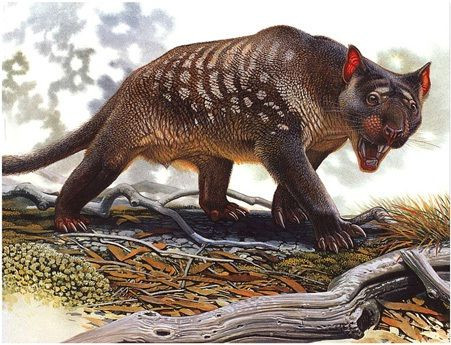Climate Change Caused Australian Megafauna Extinction, Not Aboriginal Humans

An extensive review of available evidence suggests that the enormous megafauna wandering the Australian outback thousands of years ago were wiped out by climate change, long before Aboriginal humans arrived on the continent.
"The interpretation that humans drove the extinction rests on assumptions that increasingly have been shown to be incorrect," said lead author Stephen Wroe, an associate professor at the University of New South Wales, in a statement.
Wroe argues that most of the 88 giant animal species that once existed on the continent of Sahul, which encompassed Australia, New Guinea, and Tasmania, went extinct long before humans arrived between 45,000 and 50,000 years ago.
While humans may have been involved in the extinction of the ones that remained after their arrival, his team finds no conclusive proof.
The new research, published online in the Proceedings of the National Academy of Sciences, contradicts recent findings that humans hunted most of those megafauna to extinction over 40,000 years ago.
"There has never been any direct evidence of humans preying on extinct megafauna in Sahul, or even of a tool-kit that was appropriate for big-game hunting," Wroe argued in the news release.
According to the review, there is strong evidence for only 8 to 14 now-extinct megafauna species overlapping with the existence of Aboriginal people on Sahul. There is no fossil evidence of at least 50 of the species from the late Pleistocene era, which spans the past 130,000 years.
Among these megafauna were the enormous rhino-sized Diprotodon optatum, the largest marsupials that ever lived, Procoptodon goliah, giant kangaroos with flat faces, Varanus priscus, monitor lizard the size of crocodiles, and Thylacoleo carnifex, "bizarre but deadly marsupial lions with flick-blades on their thumbs and bolt cutters for teeth," as well as assorted flightless birds, snakes, and other giant animals.
Wroe told The Australian that there were probably very few early Aborigines on the continent, and archaeological evidence suggests that they were mostly fishermen, not big-game hunters.
While previous megafauna extinction theories implicated Aboriginal humans for their "firestick farming" methods of clearing landscape for hunting, newer sediment analysis implies that frequent fires resulted from the shifting climate long before humans arrived.
"It is now increasingly clear that the disappearance of the megafauna of Sahul took place over tens, if not hundreds, of millennia under the influence of inexorable, albeit erratic, climatic deterioration," said Wroe in his statement.
Environmental indicators like Antarctic ice core records suggest that Sahul experienced major climate shifts in the past 400,000 years. The increasing dryness of the climate likely changed most of the megafauna's habitats enough to drive them to extinction long before the Aborigines arrived.
While this study takes Australian Aborigines off the hook for driving the Pleistocene megafauna mass extinction, modern-day humans don't have much to celebrate.
A growing body of evidence suggests that climate change is once again setting Earth up for a massive extinction event, as severe as the one that wiped out the dinosaurs 65 million years ago— except this time, humans are responsible.



























